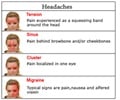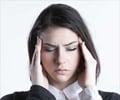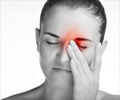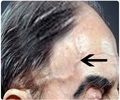During puberty, the hormone levels change in both girls and boys but the female hormones play an important role in triggering headaches.
Highlights
- As adolescence approaches, the incidence of migraine increases rapidly in girls and boys.
- Higher levels of the sex hormone progesterone were associated with fewer headaches in older teenagers. //
- Low and declining levels of estrogen are thought to trigger attacks of menstrual migraine.
"While low and declining estrogen levels are thought to precipitate migraine in adult women we found that progesterone to be the most important trigger factor in these young girls. However, this effect seemed to differ depending on the age of the girls and their pubertal development."
Nationally, about 10 percent of school age children suffer from migraine, according to the Migraine Research Foundation (MRF). As adolescence approaches, the incidence of migraine increases rapidly in girls and by age 17 about 8 percent of boys and 23 percent of girls have experienced migraine, the MRF reports.
Past studies have shown that female hormones are an important contributor for migraine in adult women, explains Martin, also a UC Health physician. Two thirds of adult women will develop migraine attacks of that occur shortly before or during menstrual bleeding. These attacks have been called "menstrual migraine."
Low and declining levels of estrogen are thought to trigger attacks of menstrual migraine. Prior to this study the contribution of female hormones on migraine was unknown in girls and at what age this might occur, says Martin.
Daily urine samples were collected and the occurrence and severity of headaches was recorded in diary for a 90-day period. The urine samples were evaluated for metabolites of the sex hormones estrogen and progesterone to determine if their presence was associated with days of headache onset or severity.
- Higher levels of progesterone appeared to be associated with reduced frequency of headaches in older teens.
- In the 16 to 17 age group there was a 42 percent chance of having a headache when levels of progesterone were low in urine samples.
- When levels of the hormone was higher the chance of headache dropped to 24 percent.
- In the 8 to 11 age group, there was 15 percent chance of suffering from migraine or headache when levels of progesterone were low.
- But a 20 percent chance of migraine or headache when high levels of progesterone were found in the urine.
"The shifting contribution of female hormones to migraine occurrence from pre-pubertal girls through puberty into adulthood suggests a very dynamic process," says Andrew Hershey, MD, PhD, endowed chair and director of neurology at Cincinnati Children’s Hospital Medical Center.
"As the brain is developing in these girls there may be differences in the brain receptors sensitivity and their roles in migraine occurrence. The role of these receptors appear to shift from progesterone to estrogen as these girls progress through puberty. As the brain matures it could respond differently to hormones than a non-maturated brain."
Girls may first start entering puberty between age 8-10 years old, although their first period may not be until age 12 or later. As they progress through this pubertal development, there may be cyclic hormonal fluctuations and irregular menstrual periods, explains Hershey.
"We have previously demonstrated that a monthly headache pattern can begin during these early stages. As they age, their menstrual periods become more regular as do hormone fluctuations and by age 17, most girls are demonstrating adult hormone patterns," says Hershey.
"But just having fluctuations in hormones or regular menstrual periods isn’t enough to account for the differences in headache severity and onset displayed by younger girls compared to older teens."
Martin says the research team was able to account for cyclic changes of hormones and that they were not found to be predictive of headache onset.
"What I can say with the urine progesterone levels is that they were preventive in the older teens and that was more of an adult response; it is what you would expect to see in older women."
"Our study suggests that female hormones play an important role in triggering headaches in young girls and that their response to hormones seems to change at the time of puberty," says Martin. "
Since migraine commonly begins during puberty in girls one might ask whether a change in response to hormones might represent the initiating factor for migraine in some girls- kind of like the "big bang" theory of migraine."
Reference
- Vincent T Martin et al., Ovarian hormones, age and pubertal development and their association with days of headache onset in girls with migraine: An observational cohort study, International Headache Society (2017) http://doi/10.1177/0333102417706980.
Source-Medindia
















